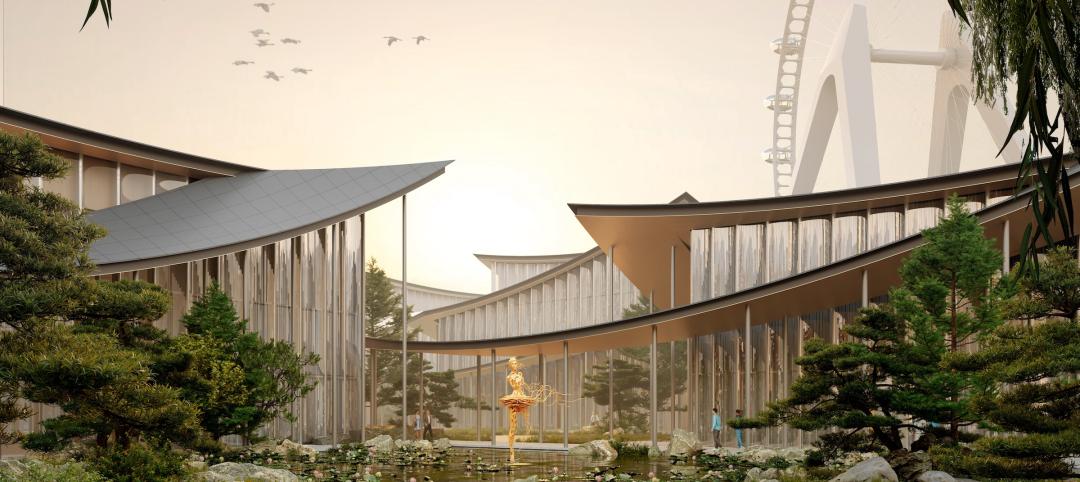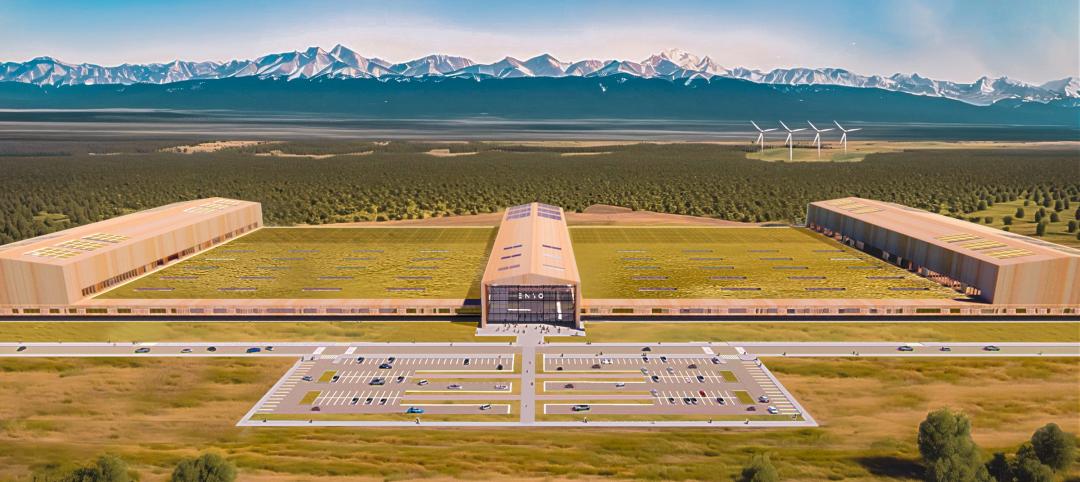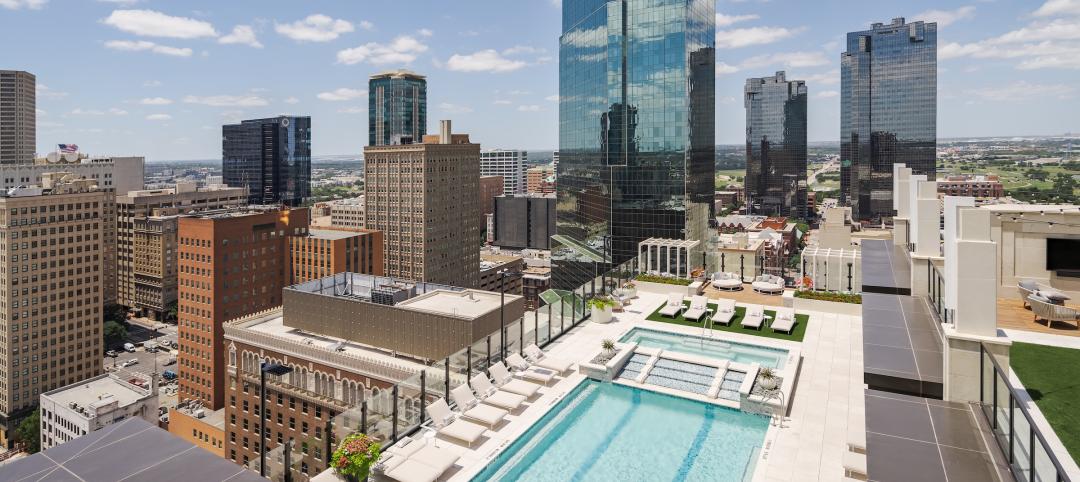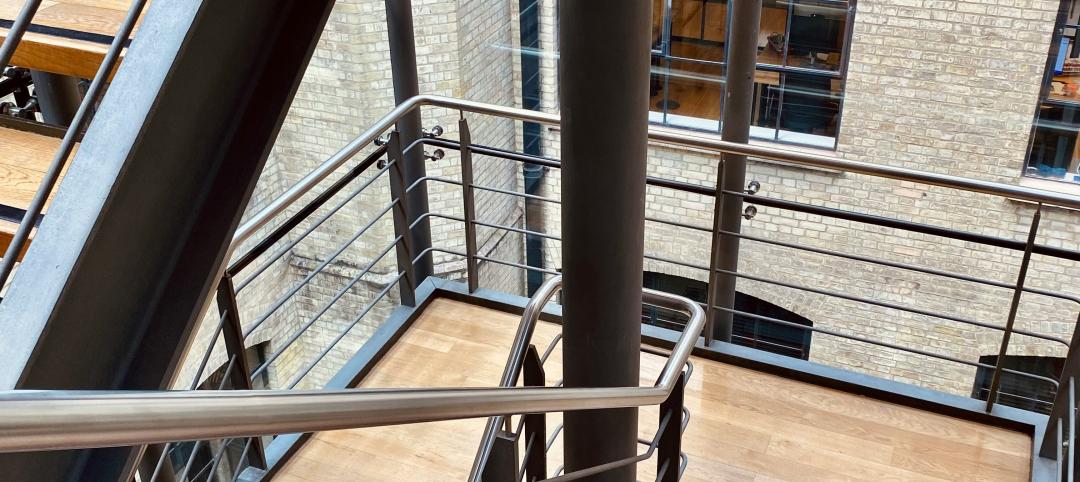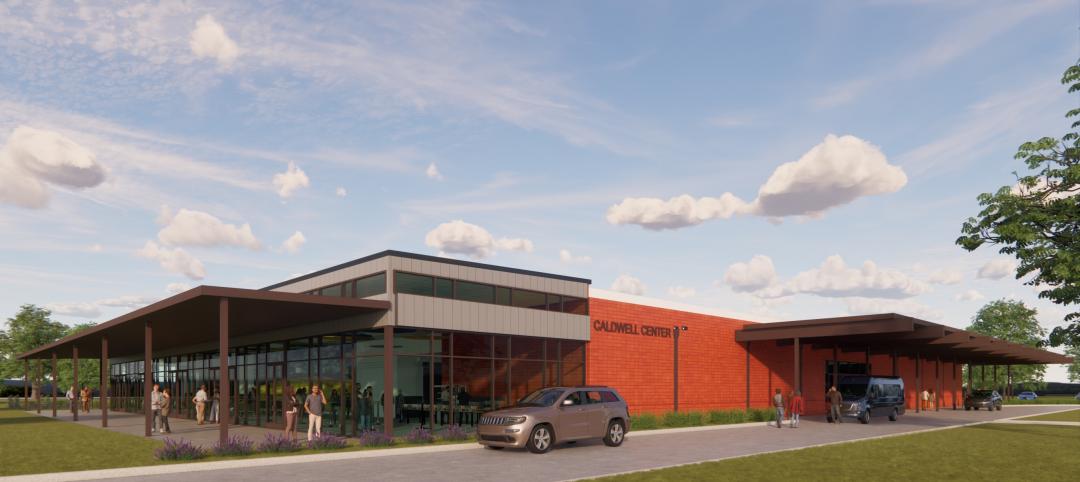Frei Otto has been named the 2015 Pritzker Architecture Prize recipient, Tom Pritzker announced this afternoon. The news comes a day after the visionary architect, 89, died in his native Germany.
Otto becomes the 40th laureate of the Pritzker Prize and the second laureate from Germany.
The Pritzker jury selected Otto as the laureate earlier this year, and shortly thereafter the Executive Director of the prize traveled to Otto’s home and studio in Warmbronn, Germany, to deliver the news in person. Learning that he had received the Pritzker Prize, Otto said: “I am now so happy to receive this Pritzker Prize and I thank the jury and the Pritzker family very much. I have never done anything to gain this prize. My architectural drive was to design new types of buildings to help poor people especially following natural disasters and catastrophes. So what shall be better for me than to win this prize? I will use whatever time is left to me to keep doing what I have been doing, which is to help humanity. You have here a happy man.”
 Frei Otto (1925-2015). Photo: Courtesy The Hyatt Foundation
Frei Otto (1925-2015). Photo: Courtesy The Hyatt Foundation
Otto practiced a holistic and collaborative approach to architecture, working with environmentalists, biologists, engineers, philosophers, historians, naturalists, artists, and other architects. A distinguished teacher and author, Otto pioneered the use of modern lightweight tent-like structures for many uses. He was attracted to them partly for their economical and ecological values. He believed in making efficient, responsible use of materials, and that architecture should make a minimal impact on the environment. Otto was a utopian who never stopped believing that architecture can make a better world for all.
In contrast to the heavy, columned, stone and masonry architecture preferred by the National Socialists in the Germany in which he grew up, Otto’s work was lightweight, open to nature and natural light, non-hierarchical, democratic, low-cost, energy-efficient, and sometimes designed to be temporary.
He is best known for the roofing for the main sports facilities in the Munich Olympic Park for the 1972 Summer Olympics (with Behnisch + Partner and others), for the German pavilion at the 1967 International and Universal Exposition (Expo 67), the Japan Pavilion at Expo 2000 in Hannover, Germany (in 2000, with Shigeru Ban, 2014 laureate of the Pritzker Architecture Prize), a series of tent structures for German Federal Exhibitions in the 1950’s, and for his work in the Middle East.
“Our jury was clear that, in their view, Frei Otto’s career is a model for generations of architects and his influence will continue to be felt,” said Tom Pritzker, Chairman and President of The Hyatt Foundation, which sponsors the prize. “The news of his passing is very sad, unprecedented in the history of the prize. We are grateful that the jury awarded him the prize while he was alive. Fortunately, after the jury decision, representatives of the prize traveled to Mr. Otto’s home and were able to meet with Mr. Otto to share the news with him. At this year’s Pritzker Prize award ceremony in Miami on May 15 we will celebrate his life and timeless work.”
 Roof for the Multihalle (multi-purpose hall) in Mannheim, 1970–1975, Mannheim, Germany. Photo © Atelier Frei Otto Warmbronn, courtesy The Hyatt Foundation
Roof for the Multihalle (multi-purpose hall) in Mannheim, 1970–1975, Mannheim, Germany. Photo © Atelier Frei Otto Warmbronn, courtesy The Hyatt Foundation
The Chair of the jury of the Pritzker Architecture Prize, Lord Peter Palumbo, said today: “Time waits for no man. If anyone doubts this aphorism, the death yesterday of Frei Otto, a titan of modern architecture, a few weeks short of his 90th birthday, and a few short weeks before his receipt of the Pritzker Architecture Prize in Miami in May, represents a sad and striking example of this truism. His loss will be felt wherever the art of architecture is practiced the world over, for he was a universal citizen; whilst his influence will continue to gather momentum by those who are aware of it, and equally, by those who are not.”
The Jury Citation
Frei Otto, born almost 90 years ago in Germany, has spent his long career researching, experimenting, and developing a most sensitive architecture that has influenced countless others throughout the world. The lessons of his pioneering work in the field of lightweight structures that are adaptable, changeable and carefully use limited resources are as relevant today as when they were first proposed over 60 years ago. He has embraced a definition of architect to include researcher, inventor, form-finder, engineer, builder, teacher, collaborator, environmentalist, humanist, and creator of memorable buildings and spaces.
He first became known for his tent structures used as temporary exhibition pavilions. The constructions at the German Federal Garden exhibitions and other festivals of the 1950s were functional, beautiful, “floating” roofs that seemed to effortlessly provide shelter, and then were easily dissembled after the events.
The cable net structure employed for the German Pavilion at Expo 67 in Montreal, prefabricated in Germany and assembled on site in a short period of time, was a highlight of the exhibition for its grace and originality. The impressive large-scale roofs designed for the Munich Olympics of 1972, combining lightness and strength, were a building challenge that many said could not be achieved. The architectural landscape for stadium, pool and public spaces, a result of the efforts of a large team, is still impressive today.
 Diplomatic Club Heart Tent, 1980, Riyadh, Saudi Arabia. Photo © Atelier Frei Otto Warmbronn, courtesy The Hyatt Foundation
Diplomatic Club Heart Tent, 1980, Riyadh, Saudi Arabia. Photo © Atelier Frei Otto Warmbronn, courtesy The Hyatt Foundation
Taking inspiration from nature and the processes found there, he sought ways to use the least amount of materials and energy to enclose spaces. He practiced and advanced ideas of sustainability, even before the word was coined. He was inspired by natural phenomena – from birds’ skulls to soap bubbles and spiders’ webs. He spoke of the need to understand the “physical, biological and technical processes which give rise to objects.” Branching concepts from the 1960s optimized structures to support large flat roofs. A grid shell, such as seen in the Mannheim Multihalle of 1974, shows how a simple structural solution, easy to assemble, can create a most striking, flexible space. The Mechtenberg footbridges, with the use of humble slender rods and connecting nodes, but with advanced knowledge, produce an attractive filigree pattern and span distances up to 30 meters. Otto’s constructions are in harmony with nature and always seek to do more with less.
Virtually all the works that are associated with Frei Otto have been designed in collaboration with other professionals. He was often approached to form part of a team to tackle complex architectural and structural challenges. The inventive results attest to outstanding collective efforts of multidisciplinary teams.
Throughout his life, Frei Otto has produced imaginative, fresh, unprecedented spaces and constructions. He has also created knowledge. Herein resides his deep influence: not in forms to be copied, but through the paths that have been opened by his research and discoveries. His contributions to the field of architecture are not only skilled and talented, but also generous.
For his visionary ideas, inquiring mind, belief in freely sharing knowledge and inventions, his collaborative spirit and concern for the careful use of resources, the 2015 Pritzker Architecture Prize is awarded to Frei Otto.
Meet the Jury
The distinguished jury that selected the 2015 Pritzker Laureate consists of its chairman, Lord Palumbo, architectural patron, Chairman Emeritus of the Trustees, Serpentine Galleries, former Chairman of the Arts Council of Great Britain, and former Chairman of the Tate Gallery Foundation; Alejandro Aravena, architect and Executive Director of Elemental in Santiago, Chile; Stephen Breyer, U.S. Supreme Court Justice, Washington, D.C.; Yung Ho Chang, architect and educator, Beijing, The People’s Republic of China; Kristin Feireiss, architecture curator, writer, and editor, Berlin, Germany; Glenn Murcutt, architect and 2002 Pritzker Laureate, Sydney, Australia; Richard Rogers, architect and 2007 Pritzker Laureate, London, United Kingdom; Benedetta Tagliabue, architect and director of EMBT Miralles Tagliabue, Barcelona, Spain; and Ratan N. Tata, Chairman Emeritus of Tata Sons, the holding company of the Tata Group, Mumbai, India. Martha Thorne, Associate Dean for External Relations, IE School of Architecture & Design, Madrid, Spain, is the Executive Director of the Prize.
The 2015 award ceremony will be held in Miami Beach at the New World Center, designed by 1989 Pritzker Prize Laureate Frank Gehry, on May 15, 2015. This marks the first time the ceremony will be in Miami, joining the culturally and historically significant venues around the world. The ceremony will be streamed live on PritzkerPrize.com, the website of the Pritzker Architecture Prize.
About the Pritzker Architecture Prize
The Pritzker Architecture Prize was founded in 1979 by the late Jay A. Pritzker and his wife, Cindy. Its purpose is to honor annually a living architect whose built work demonstrates a combination of those qualities of talent, vision and excellence, which has produced consistent and significant contributions to humanity and the built environment through the art of architecture. The laureates receive a $100,000 grant and a bronze medallion.
Related Stories
Museums | Aug 29, 2024
Bjarke Ingels' Suzhou Museum of Contemporary Art conceived as village of 12 pavilions
The 60,000-sm Suzhou Museum of Contemporary Art in Suzhou, Jiangsu, China recently topped out. Designed by Bjarke Ingels Group (BIG), the museum is conceived as a village of 12 pavilions, offering a modern interpretation of the elements that have defined the city’s urbanism, architecture, and landscape for centuries.
Adaptive Reuse | Aug 28, 2024
Cities in Washington State will offer tax breaks for office-to-residential conversions
A law passed earlier this year by the Washington State Legislature allows developers to defer sales and use taxes if they convert existing structures, including office buildings, into affordable housing.
Industrial Facilities | Aug 28, 2024
UK-based tire company plans to build the first carbon-neutral tire factory in the U.S.
ENSO, a U.K.-based company that makes tires for electric vehicles, has announced plans to build the first carbon-neutral tire factory in the U.S. The $500 million ENSO technology campus will be powered entirely by renewable energy. The first-of-its-kind tire factory aims to be carbon neutral without purchased offsets, using carbon-neutral raw materials and building materials.
Architects | Aug 28, 2024
KTGY acquires residential high-rise specialist GDA Architects
KTGY, an award-winning design firm focused on architecture, interior design, branded environments and urban design, announced that it has acquired GDA Architects, a Dallas-based architectural firm specializing in high rise residential, hospitality and industrial design.
K-12 Schools | Aug 26, 2024
Windows in K-12 classrooms provide opportunities, not distractions
On a knee-jerk level, a window seems like a built-in distraction, guaranteed to promote wandering minds in any classroom or workspace. Yet, a steady stream of studies has found the opposite to be true.
Building Technology | Aug 23, 2024
Top-down construction: Streamlining the building process | BD+C
Learn why top-down construction is becoming popular again for urban projects and how it can benefit your construction process in this comprehensive blog.
Airports | Aug 22, 2024
Portland opens $2 billion mass timber expansion and renovation to its international airport
This month, the Portland International Airport (PDX) main terminal expansion opened to passengers. Designed by ZGF for the Port of Portland, the 1 million-sf project doubles the capacity of PDX and enables the airport to welcome 35 million passengers per year by 2045.
Adaptive Reuse | Aug 22, 2024
6 key fire and life safety considerations for office-to-residential conversions
Office-to-residential conversions may be fraught with fire and life safety challenges, from egress requirements to fire protection system gaps. Here are six important considerations to consider.
Resiliency | Aug 22, 2024
Austin area evacuation center will double as events venue
A new 45,000 sf FEMA-operated evacuation shelter in the Greater Austin metropolitan area will begin construction this fall. The center will be available to house people in the event of a disaster such as a major hurricane and double as an events venue when not needed for emergency shelter.
Cultural Facilities | Aug 21, 2024
Baltimore’s National Aquarium opens 10,000-sf floating wetland that mimics the harbor’s original tidal marsh habitat
The National Aquarium in Baltimore has opened the National Aquarium Harbor Wetland, a 10,000-sf floating wetland that mimics the Inner Harbor’s original Chesapeake Bay tidal marsh habitat. Located between Piers 3 and 4 on Baltimore’s Inner Harbor, the $14 million project features more than 32,000 native shrubs and marsh grasses.



